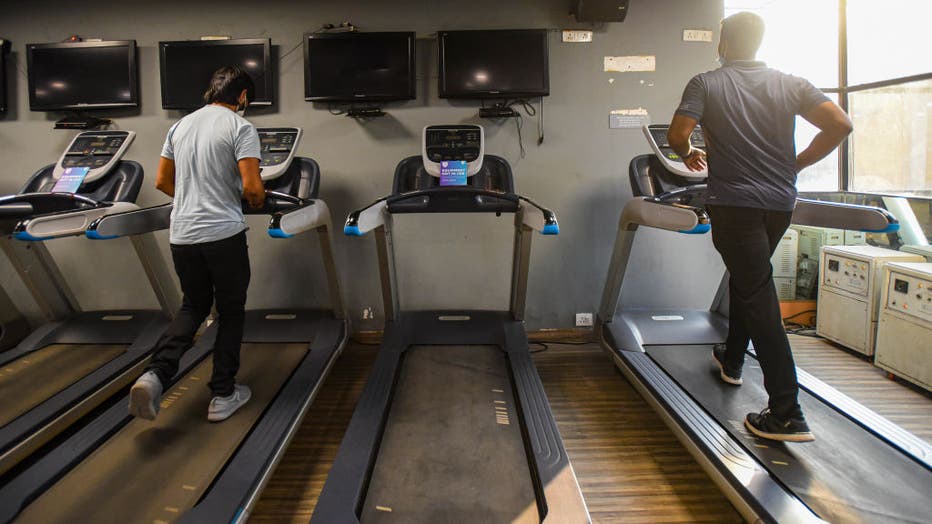CDC abruptly removes guidance on COVID-19 airborne transmission, says it was posted in error
ATLANTA - The U.S. Centers for Disease Control and Prevention said Monday that it mistakenly posted guidance saying the novel coronavirus can be transmitted by tiny particles that linger in the air, and the agency pulled the updated information from its website.
“A draft version of proposed changes to these recommendations was posted in error to the agency’s official website,” the CDC said in an email. “CDC is currently updating its recommendations regarding airborne transmission of SARS-CoV-2 (the virus that causes COVID-19).”
“Once this process has been completed, the update language will be posted,” the statement added.
Since the onset of the COVID-19 pandemic, scientists and medical experts have been racing to better understand the novel coronavirus and how it spreads.

An image taken Sept. 14, 2020 shows two people running on treadmills inside a gym in New Delhi, India. (Photo by Amal KS/Hindustan Times via Getty Images
The CDC guidance has maintained that inhalation of respiratory droplets or small particles when an infected person coughs, sneezes or talks is thought to be the main way the virus spreads. Particularly between people who are in close contact with one another — about 6 feet.
Last week, it added information about tiny particles in the air that can be inhaled by others.
“It is possible that COVID-19 may spread through the droplets and airborne particles that are formed when a person who has COVID-19 coughs, sneezes, sings, talks, or breathes,” the CDC language stated, which has since been removed. “There is growing evidence that droplets and airborne particles can remain suspended in the air and be breathed in by others, and travel distances beyond 6 feet (for example, during choir practice, in restaurants, or in fitness classes). In general, indoor environments without good ventilation increase this risk.”
The abrupt reversal comes amid scientific evidence suggesting that these tiny virus particles can linger in the air and infect people as they inhale. In July, more than 200 scientists from a variety of fields contributed to an open letter calling on the World Health Organization to acknowledge that the coronavirus can spread through the air and urging the global body to update its official guidance on the subject.
RELATED: Airborne COVID-19: What does it mean, how does it increase risk and what are the steps to stay safe?
The scientists wrote that studies have shown “beyond any reasonable doubt that viruses are released during exhalation, talking and coughing in micro-droplets small enough to remain aloft in the air.”
These micro-droplets, or aerosols, contain less virus than large droplets do when a person coughs or sneezes. But because they are lighter, they can also linger in the air for an extended period of time, possibly for longer in confined areas that aren’t well ventilated, the scientists said.
Last week, the CDC dropped a controversial piece of COVID-19 guidance that said people who didn’t have symptoms didn't need to get tested — which prompted a rash of criticism from health experts.
The CDC now says anyone who has been within 6 feet of a person with confirmed infection for at least 15 minutes should get a test. The agency called the changes a “clarification” that was needed “due to the significance of asymptomatic and pre-symptomatic transmission.”
RELATED: CDC drops controversial coronavirus testing guidance
More than 6.8 million people have contracted COVID-19 in the United States, and nearly 200,000 have died, according to data compiled Sept. 21 by Johns Hopkins University.
This story was reported from Cincinnati.

